In order to generate a more inclusive dataset of Pseudomonas genes mapped to putative in-paralogs and putative orthologs in other Pseudomonas species/strains, we developed a Pseudomonas Orthologous Groups classification system.
To generate ortholog groups, pair-wise DIAMOND searches were run on all genomes in the database to find reciprocal best hits (RBHs) for each gene. These analyses often resulted in multiple candidate genes for RBH status, which were narrowed down by examining the similarity between the query's flanking genes and the hit's flanking genes. If two candidate genes were directly adjacent, they where both accepted as RBHs that involve putative in-parology.
Pairwise intra-genome DIAMOND searches were also performed to acquire in-paralog information (i.e. gene duplications occurring after species divergence). If two genes in one genome were reciprocally more similar to each other than to any gene in the other genomes, the two genes were designated putative in-paralogs. Ortholog groups are built by starting with a seed gene and then adding all genes to which there is a RBH or in-paralog relationship.
Every new gene added to an ortholog group was then treated as a seed gene and the addition process was repeated until all qualifying genes had been added. The result was the development of orthologous groups, specifically generated for Pseudomonas species genomes, which can be used to sort search results.
Pseudomonas Ortholog Group POG000080
| Strain | Locus Tag | Description | Same-Strain Members | Fragment ? | |
|---|---|---|---|---|---|
| Pseudomonas aeruginosa AZPAE14988 | NT03_RS06305 |
signal peptide protein
|
2 same-strain members: NT03_RS28680 NT03_RS06305 |

|
|
| Pseudomonas aeruginosa AZPAE14989 | NT04_RS24860 |
signal peptide protein
|
2 same-strain members: NT04_RS24860 NT04_RS10640 |
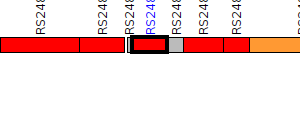
|
|
| Pseudomonas aeruginosa AZPAE14989 | NT04_RS10640 |
hypothetical protein
|
2 same-strain members: NT04_RS24860 NT04_RS10640 |

|
|
| Pseudomonas aeruginosa AZPAE14996 | NT11_RS25295 |
signal peptide protein
|
2 same-strain members: NT11_RS25295 NT11_RS28790 |
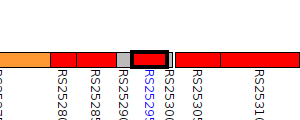
|
|
| Pseudomonas aeruginosa AZPAE14996 | NT11_RS28790 |
signal peptide protein
|
2 same-strain members: NT11_RS25295 NT11_RS28790 |

|
|
| Pseudomonas aeruginosa AZPAE15017 | NT33_RS18465 |
signal peptide protein
|
2 same-strain members: NT33_RS18465 NT33_RS08220 |
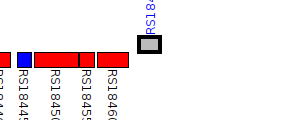
|
|
| Pseudomonas aeruginosa AZPAE15017 | NT33_RS08220 |
signal peptide protein
|
2 same-strain members: NT33_RS18465 NT33_RS08220 |
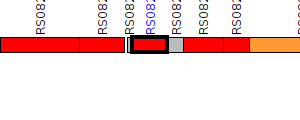
|
|
| Pseudomonas aeruginosa AZPAE15022 | NT38_RS26495 |
signal peptide protein
|
2 same-strain members: NT38_RS26495 NT38_RS04060 |
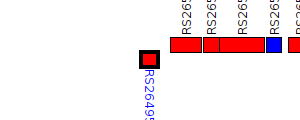
|
|
| Pseudomonas aeruginosa AZPAE15022 | NT38_RS04060 |
signal peptide protein
|
2 same-strain members: NT38_RS26495 NT38_RS04060 |
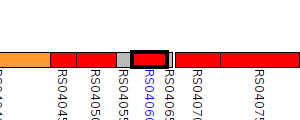
|
|
| Pseudomonas aeruginosa AZPAE15025 | NT41_RS30315 |
signal peptide protein
|
1 member |
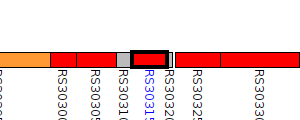
|
|
| Pseudomonas aeruginosa AZPAE15026 | NT42_RS24755 |
signal peptide protein
|
2 same-strain members: NT42_RS24755 NT42_RS10610 |

|
|
| Pseudomonas aeruginosa AZPAE15026 | NT42_RS10610 |
signal peptide protein
|
2 same-strain members: NT42_RS24755 NT42_RS10610 |
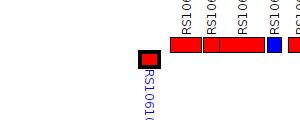
|
|
| Pseudomonas aeruginosa AZPAE15032 | NT48_RS26715 |
signal peptide protein
|
2 same-strain members: NT48_RS01890 NT48_RS26715 |
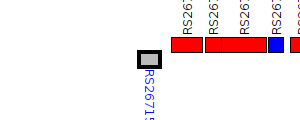
|
|
| Pseudomonas aeruginosa AZPAE15032 | NT48_RS01890 |
signal peptide protein
|
2 same-strain members: NT48_RS01890 NT48_RS26715 |
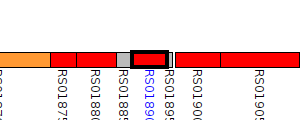
|
|
| Pseudomonas aeruginosa AZPAE15033 | NT49_RS01430 |
type VI secretion system FHA domain-containing protein
|
2 same-strain members: NT49_RS01430 NT49_RS06565 |

|
|
| Pseudomonas aeruginosa AZPAE15033 | NT49_RS06565 |
signal peptide protein
|
2 same-strain members: NT49_RS01430 NT49_RS06565 |

|
|
| Pseudomonas aeruginosa AZPAE15055 | NT71_RS24760 |
signal peptide protein
|
2 same-strain members: NT71_RS24760 NT71_RS09900 |

|
|
| Pseudomonas aeruginosa AZPAE15055 | NT71_RS09900 |
signal peptide protein
|
2 same-strain members: NT71_RS24760 NT71_RS09900 |

|
|
| Pseudomonas aeruginosa AZPAE15065 | NT81_RS25245 |
hypothetical protein
|
2 same-strain members: NT81_RS25245 NT81_RS27215 |

|
|
| Pseudomonas aeruginosa AZPAE15065 | NT81_RS27215 |
hypothetical protein
|
2 same-strain members: NT81_RS25245 NT81_RS27215 |
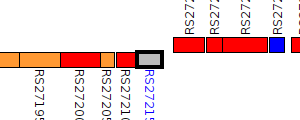
|